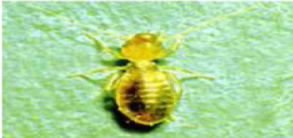
Psocids (SO-sids) are soft bodied insects, less than 4 mm (3/16 inch) long with long, two pairs of wings which are usually extend beyond abdomen except some species that have shortened wings, slender antennae and chewing mouthparts. Psocids are common but harmless household pests, they are mainly a nuisance. They are weak fliers, flying for short bursts then landing soon after. They can be found in old books, carpets and other furnishings in the home (which is why they are sometimes called Book or Dust lice). They feed on moulds and mildew. But they are not caused by poor hygiene; they are just as common in the cleanest of homes.
What causes them?
Psocids are typically found in areas that are humid, damp and moist because, like termites, they have trouble controlling water loss through their soft exoskeletons. High humidity conditions are also required for the growth of mould and mildew, the primary food of most psocids. When the humidity drops to a critical level, they must migrate to areas with a higher humidity or die.
Where can they be found?
Humid conditions could be created from condensation that is due to not having enough ventilation in the kitchen, rooms, etc.
In older homes, psocids are most commonly found in association with damp books whose starch sizing and glues readily support mould growth. Psocids are also found in other damp areas with mould growth such as bath traps with leaking or sweating pipes, in wall, floor, and window and door casing voids, storage trunks, groceries, stored products such as flour, rugs, paper, straw matting, cardboard cartons, upholstered furniture containing Spanish moss as stuffing, in tow (flax, hemp, or jute fibers), and in closets, pianos, and cabinets.
In new homes, apartments, and office buildings, psocids are sometimes found within 4-12 months after construction before the plaster or sheetrock walls have dried out. This dampness associated with plastering temporarily supports mould growth, especially in wall voids.
Outdoors, psocids occur in bird and mammal nests, living foliage, dead foliage, ground litter, on top of tree bark, underneath loose tree bark, and on rock surfaces. They have also been found in mammal fur.
Method of Control
Psocid control is achieved by controlling the humidity. Lowering and keeping the humidity below 50% eventually kills psocids; a greater and/or quicker reduction of humidity reduces the time required.
Actions that could help to reduce humidity
- Use air conditioners and/or de-humidifiers when needed. However, air conditioners may cause condensation. Therefore, it is advisable to open the window and air the room daily.
- Run the bathroom fan or open the window after showering.
Moisture and Mould Prevention Tips
- Moisture Control is the Key to Mould Control
- When water leaks or spills occur indoors, ACT QUICKLY. In most cases, mould will not grow if wet or damp materials are dried 24-48 hours after a leak or spill happens.
- Clean and repair roof gutters regularly.
- Make sure the ground slopes away from the building foundation, so that water does not enter or collect around the foundation.
- Keep air conditioning drip pans clean and the drain lines unobstructed and flowing properly.
- Keep indoor humidity low.
- If you see condensation or moisture collecting on windows, walls or pipes act quickly to dry the wet surface and reduce the moisture/water source. Condensation can be a sign of high humidity.
Chemical Treatment
An intensive Ultra Low Volume (ULV) treatment with insecticide can be carried out to eliminate the current infestation of psocids present in your premises. This is a spraying technique, which emits very fine insecticide particles, which can reach every nook and corner, in cracks and crevices etc. allowing for allows greater coverage.
A follow up inspection and treatment will also be carried out after the treatment.
ORIGIN Exterminators is the first pest management company in the world to be awarded ISO 14001 EMS certification
